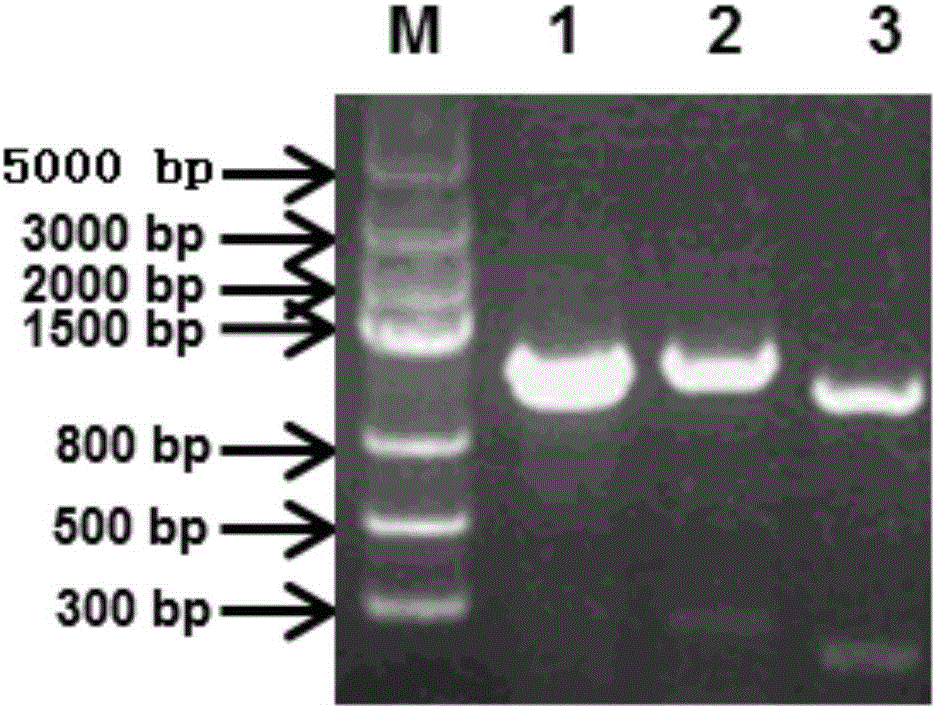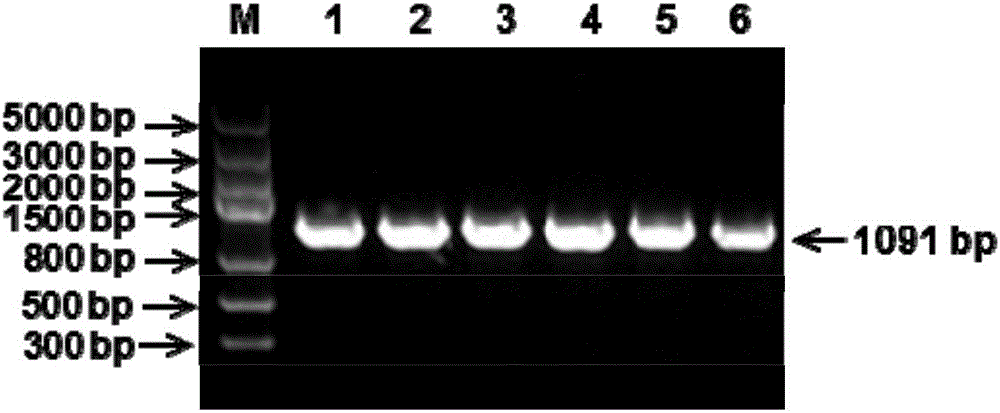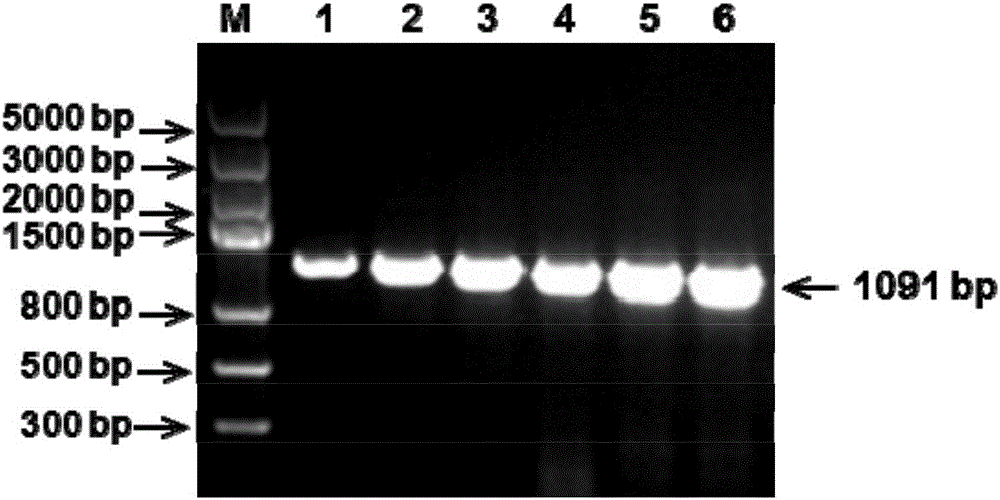Reagent kit for detecting avian leukemia virus J sub-groups
An avian leukemia virus and kit technology, applied in the field of molecular biology, can solve the problems of ALV-J gene becoming faster, more difficult to detect, unsuitable for detection, etc., and achieve the effects of improving detection efficiency, convenient operation and high specificity
- Summary
- Abstract
- Description
- Claims
- Application Information
AI Technical Summary
Problems solved by technology
Method used
Image
Examples
Embodiment 1
[0037] Embodiment 1 is used to detect the design of the specific primer of J subgroup of avian leukosis virus
[0038] The genome sequence of HLJ13SH01 (GenBank accession number: KM376510) in the NCBI database was used as a reference to design specific primers. Among the many alternative primers (shown in Table 1), after repeated screening and comparison tests to exclude possible non-specific matches between the primers and other species sequences, after repeated screening and verification, the optimized primer pair was finally obtained , each primer amplification electrophoresis results are as follows figure 1 shown. Select the primer pair 1 with the brightest amplification target band and no non-specific bands as the best primers. The upstream primer sequence is located at the end of the pol gene, and the downstream primer is located at the end of the gp85 gene to amplify a sequence with a length of about 1091bp. The primers are between 5296nt-5315nt, and the downstream pr...
Embodiment 2
[0042] Example 2 Detecting the RT-PCR Detection Method of J Subgroup Avian Leukosis Virus Optimum Annealing Temperature Exploration
[0043] 1. Pretreatment of test samples
[0044] (1) Tissue sample processing: take 100 mg of organ tissue samples, add 0.5 ml of sterilized saline, grind and suspend with a grinder, centrifuge the tissue suspension at 3000 rpm for 30 min, and take the supernatant for detection and analysis.
[0045] (2) Treatment of cloacal or oropharyngeal swab samples: add 0.5 ml sterile saline to the swab sample and oscillate to suspend with a vortex shaker, centrifuge the sample suspension at 3000 rpm for 30 min, and take the supernatant for detection.
[0046] 2. Extraction of total RNA from samples
[0047] Extraction was performed according to the instructions of Trizol RNA Extraction Kit (Invitrogen).
[0048] 3. Reverse transcription into cDNA
[0049] Add the following components into a 0.2ml centrifuge tube: 4 μl of RNA solution, 1 μl of random pri...
Embodiment 3
[0057] Example 3 Detecting the optimal cycle number of the RT-PCR detection method for J subgroup avian leukosis virus
[0058] For the pretreatment of the test sample, the extraction of the total RNA of the sample, and the reverse transcription into cDNA, refer to the corresponding method in Example 2. Using the conditions determined in Examples 1 and 2, 6 different cycle numbers (28, 29, 30, 31, 32 and 33) were designed to perform RT-PCR on ALV-J.
[0059] Add ingredients in 0.2ml centrifuge tube see Example 2. After mixing gently, use the following reaction program: initial denaturation at 94°C for 5 min, 30 cycles (94°C for 45 s, 55°C for 45 s, 72°C for 70 s), and finally extension at 72°C for 10 min. After the PCR reaction, use 1× Prepare 1% agarose gel with TAE electrophoresis buffer and mix the fluorescent dye Gelsafe according to the reference ratio, take 7 μl of PCR product and add it to the gel well, select the appropriate voltage (4V / cm-10V / cm) for electrophoresis,...
PUM
 Login to View More
Login to View More Abstract
Description
Claims
Application Information
 Login to View More
Login to View More - R&D
- Intellectual Property
- Life Sciences
- Materials
- Tech Scout
- Unparalleled Data Quality
- Higher Quality Content
- 60% Fewer Hallucinations
Browse by: Latest US Patents, China's latest patents, Technical Efficacy Thesaurus, Application Domain, Technology Topic, Popular Technical Reports.
© 2025 PatSnap. All rights reserved.Legal|Privacy policy|Modern Slavery Act Transparency Statement|Sitemap|About US| Contact US: help@patsnap.com



